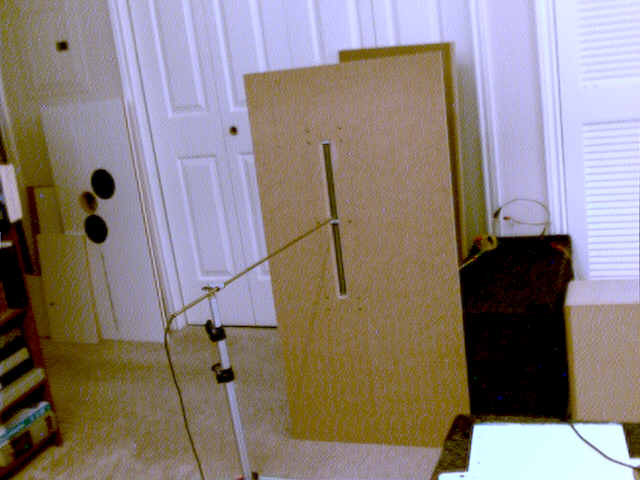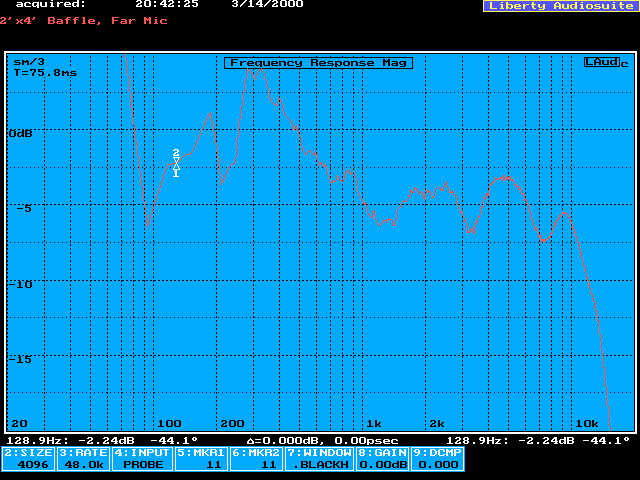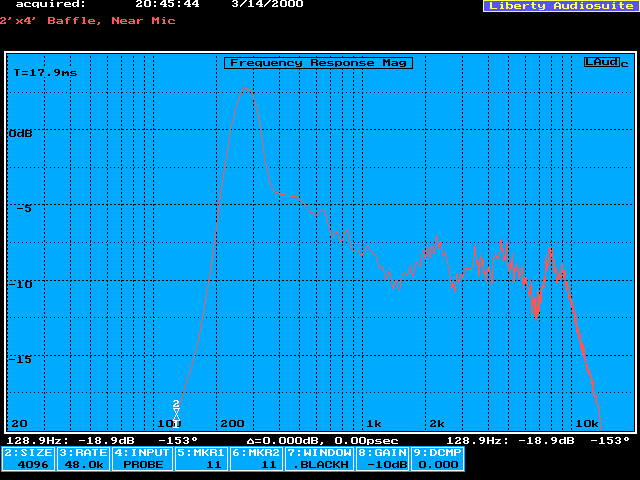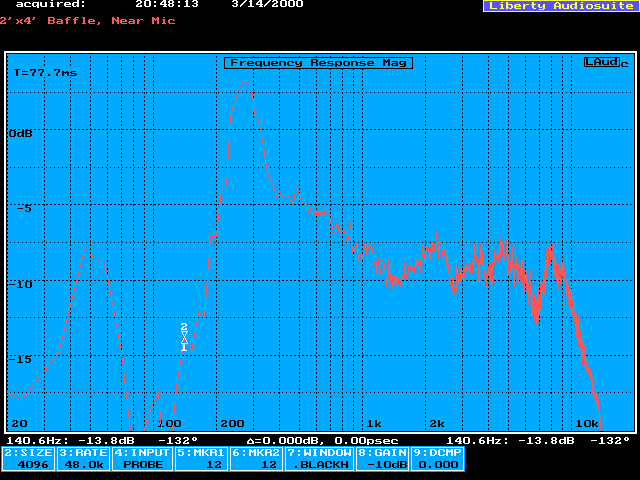This is the test setup in my living room. (The microphone is close in this photo because I just had finished some “close mic” testing.)
I mounted one ribbon unit on a 2’x4′ sheet of 3/4″ thick MDF. The slot in the front is 1/2″ deep and has a 45 degree bevle. You can see wholes in the baffle where I had to drill holes to allow some screws to poke through.

The pic above illustrates the cross-section of the test baffle showing how I routed a recess for the driver to mount from the rear (one square = 1/8″ on a side). The lip on the inside was suppose to compress the foam, but without screws in the middle of the frame, the frame was bending from the pressure. So I had to loosen the assembly, leaving about a 1/4″ foam sealed gap between driver and baffle.
This is the response measured by my Liberty Audio Suite setup. In this case, the microphone is about 20″ away, and the time window of the measurement is long, 75.8 milliseconds. The long time window allows quite a bit of noise into the measurement, so this plot is smoothed with 1/3-octave filtering.
The reason for using the long window is to obtain low-frequency information. Unfortunately, the noise level is too high in my apartment. Everything below 200 Hz is bogus.
The response in the mid-range and high frequencies is valid. You can see that the response doesn’t go much beyond 10 kHz. There are dips at about 1.5 Khz, 3.5 kHz, and 7.5 kHz. The dips are pretty narrow except at 1.5 kHz, so probably aren’t that audiable (they are comparable to that from placing a frame-mounted grill over a conventional speaker). A frequency of 1.5 kHz is a wavelength of 23 cm / 9 inches. That would be the distance between the aluminum support bars. It is also about the distance from the left baffle edge to the driver opening. Hmmmm… more testing is going to be required.
These two response curves are measured with the microphone only 1/4″ from the membrane. For the first, the time window is 17.9 ms, the second 77.7 ms. They match the trends in the far microphone measured response in the mid-range.
Noticable is the hump in the response at about 300 Hz. Looking at the time response directly, the resonance at 300 Hz is clearly visible and real. It lasts for about 3 half-cycles, then dies down down significantly. I believe the hump is there on purpose; if this test was done on a narrow baffle like the designers intend, the curve would smooth out. Why… on any baffle the sound from the back of the driver cancels with that from the front in the low frequencies. The narrower the baffle, the higher the frequency at which the cancelation occures.
Roughly, cancelation starts at 200 divided by the width of the baffle (result in hertz, units of width are meters). Given the rise in response starting at 1000 Hz, my guess is the “recommended” baffle width for these was 8″ (20 cm).



